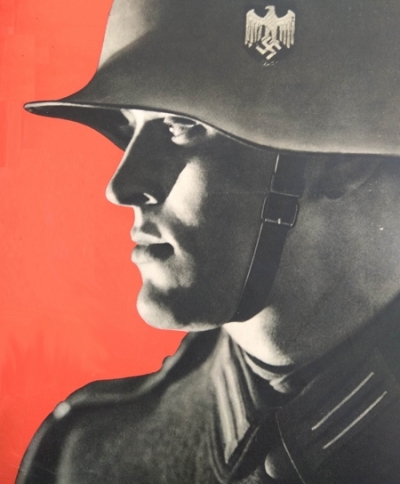World War Two - German Army Studies
 A U.S. Government study regarding the conscription policies of the German Army during World War II. Attention is paid to the development of this policy from it's earliest days in 1935, when the draft was introduced, to the "total mobilization" scheme that followed the battle of Stalingrad.
Click here to read about the German concept of Blitzkrieg.
A one and a half page study on the training of the W.W. II German soldier - the soldier's oath and the rigorous system of discipline that he had to adhere to. Also discussed is the German salute ("Heil..."), and the German Army's understanding of soldierly duty.
Also discussed the German Army's alternate pledge penned especially for atheists.
From Amazon: Soldat: Reflections of a German Soldier, 1936-1949
A one page study of German World War II tactics that was created by the United States Department of War two months prior to the German surrender:
"...the Germans have placed a considerable reliance on novel and sensational weapons such as the mass use of armor, the robot bomb, and the super-heavy tank. Their principal weaknesses in this regard have been their failure to integrate these new techniques with established arms and tactics --German field artillery, for example, did not maintain pace with German armor -and their devotion to automatic weapons at the expense of accuracy." Attached is the U.S. War Department study regarding the tactical uses of German airborne forces throughout the course of the Second World War; from the Battle of Crete to the Battle of the Bulge: "In Russia, the Balkans, and the December 1944 counteroffensive in the Ardennes, units varying in strength from a platoon to a battalion have been landed behind enemy lines to disrupt communications, to seize such key points as railroads, roadheads, bridges and power stations."
"After five and a half years of ever growing battle against ever-stronger enemies, the German Army in 1945 looks, at a glance, much the worse for wear. It is beset on all sides and is short of everything. It has suffered appalling casualties and must resort to old men, boys, invalids and unreliable foreigners for its cannon fodder...Yet this shabby, war-weary machine has struggled on a in a desperate effort to postpone it's inevitable demise. At the end of 1944 it was still able to mount an offensive calculated to delay for months the definitive piercing of the Western bulwarks of Germany." "The German soldier is one of several different types depending on whether he is a veteran of 4 or 5 years, or a new recruit. The veteran of many fronts and many retreats is a prematurely aged, war weary cynic, either discouraged and disillusioned or too stupefied to have any thought of his own...The new recruit, except in some crack SS units, is either too young or too old and often in poor health." |
MORE ARTICLES >>> PAGE: * 1 * 2 * |
|